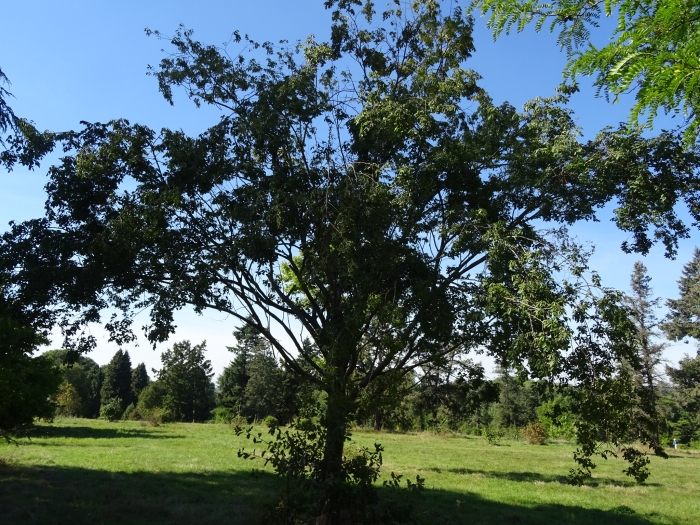Caucasian Zelkova
(Zelkova carpinifolia)
Caucasian Zelkova (Zelkova carpinifolia)
/
/

Olive Titus
Public Domain Mark 1.0
Image By:
Olive Titus
Recorded By:
Copyright:
Public Domain Mark 1.0
Copyright Notice:
Photo by: Olive Titus | License Type: Public Domain Mark 1.0 | License URL: https://creativecommons.org/licenses/by/2.0/ | Uploader: olive.titus | Publisher: Flickr |









































Estimated Native Range
Summary
Zelkova carpinifolia, commonly known as Caucasian Zelkova or Caucasian Elm, is a deciduous tree native to the forests and slopes of the Caucasus, Kaçkar, and Alborz mountains in the extreme southeast of Europe and southwest Asia. It typically grows to a height of 65-100 feet (20-30 meters) with a spread of 50-80 feet (15-24 meters). The Caucasian Zelkova has a spreading habit with a rounded crown and smooth, gray bark that exfoliates to reveal orange patches, adding winter interest. Its leaves are alternate, with a serrated margin, and turn yellow to reddish-purple in the fall. The small, inconspicuous greenish flowers appear in spring, followed by non-showy drupes.
The Caucasian Zelkova is valued for its attractive bark, graceful shape, and vibrant fall color. It is used in urban settings, as a street tree, and in parks due to its tolerance of urban stress and its non-invasive root system. This species is also drought-tolerant once established, making it suitable for xeriscaping. It requires well-drained soil and can adapt to a range of soil types, from clay to sandy loams. While it prefers full sun, it can also tolerate part shade. There are no significant disease or pest problems, but it can be susceptible to Dutch elm disease, although less so than other elm species.CC BY-SA 4.0
The Caucasian Zelkova is valued for its attractive bark, graceful shape, and vibrant fall color. It is used in urban settings, as a street tree, and in parks due to its tolerance of urban stress and its non-invasive root system. This species is also drought-tolerant once established, making it suitable for xeriscaping. It requires well-drained soil and can adapt to a range of soil types, from clay to sandy loams. While it prefers full sun, it can also tolerate part shade. There are no significant disease or pest problems, but it can be susceptible to Dutch elm disease, although less so than other elm species.CC BY-SA 4.0
Plant Description
- Plant Type: Tree
- Height: 50-70 feet
- Width: 25-40 feet
- Growth Rate: Moderate
- Flower Color: N/A
- Flowering Season: Spring
- Leaf Retention: Deciduous
Growth Requirements
- Sun: Full Sun, Part Shade
- Water: Low
- Drainage: Fast
Common Uses
Bee Garden, Butterfly Garden, Low Maintenance
Natural Habitat
Forests and slopes of the Caucasus, Kaçkar, and Alborz mountains
Other Names
Common Names: Caucasian Zelkova, Zelkova
Scientific Names: , Zelkova carpinifolia, Zelkova crenata, Planera crenata, Ulmus polygama, Planera repens, Abelicea crenata, Abelicea sibirica, Abelicea ulmoides, Planera carpinifolia
GBIF Accepted Name: Zelkova carpinifolia (Pall.) C.Koch